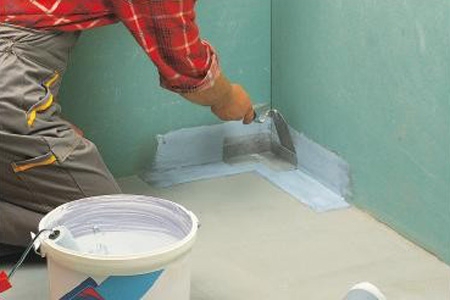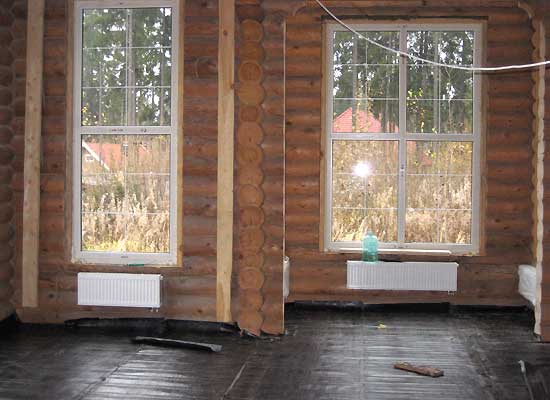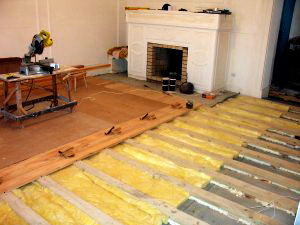Floor waterproofing in an apartment: a review of insulation materials and rules for working with them
Humidity is always present in any building. And the floors are a kind of accumulator of this moisture. Accumulating in the lower part of the premises, it degrades the performance of floor coverings. It creates an unfavorable atmosphere for people to live. Therefore, an important step in the arrangement of housing is the waterproofing of the floor in the apartment. Consider where the moisture in the rooms comes from, how to make the floor waterproofing itself and eliminate possible defects.
In rooms, warm air rises up to the ceiling, and cold air drops down to the floor. This is a physical undeniable law. But the ceiling of the lower floors is at the same time a floor for the upper. It turns out that warm air from below and cold from above acts on the floor slab. This causes condensation on the floor. That is why it is so important to waterproof the floor in the premises.
Types of waterproofing materials
The device for waterproofing the floor in the apartment consists of preparing the base, constructing a protective fence and a waterproofing cover.
Varieties of waterproofing are enough to choose the right one. In accordance with the ongoing work, waterproofing the floor is:
- smear;
- plastering;
- cast;
- filling;
- okleechnoy.
Before performing any waterproofing work, several rules must be observed:
- the base for waterproofing should be clean and dry;
- on the concrete floor, all screed defects are eliminated;
- the wooden base must be cleaned and sanded;
- the use of waterproofing materials must be carried out strictly according to the instructions.
Coating waterproofing
For coating waterproofing use bitumen-containing materials, bitumen-polymer or cement-polymer mastics.
Before applying insulation materials, the surface is coated with a deep penetration primer. It promotes strong adhesion of the base to insulating materials.
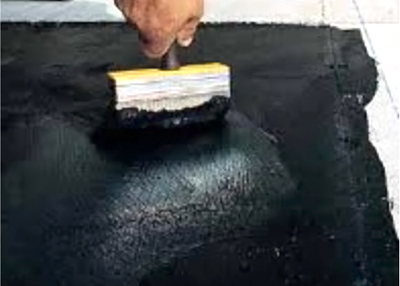
The bottom of the walls is coated with a protective layer. After applying the first layer of waterproofing material, wait for it to dry, and then apply the second layer. In places highly exposed to moisture, up to 5 such layers of waterproofing can be applied.
Stucco waterproofing
When performing plaster waterproofing, cement-polymer compositions are used. The temperature in the room where the work is carried out should be in the range from + 5º to + 30º.
Waterproofing material is applied in several layers. Between applications wait 5-10 minutes. At the end of the work, the waterproofing layer is protected from drying out, exposure to subzero temperatures and mechanical stresses.
Cast waterproofing
Cast waterproofing is the highest quality possible. It is carried out by casting liquid asphalt solutions on the floor in two or three layers.
The total thickness of such waterproofing is 2-2.5 cm. To perform cast waterproofing, it is necessary to prepare the formwork built around the perimeter of the room.
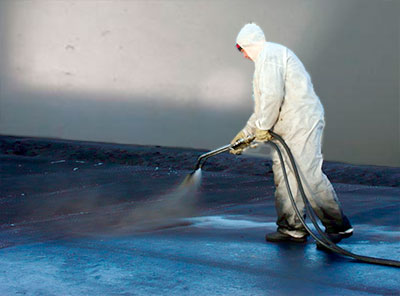
The insulation material is heated to the required temperatures and poured into the formwork. The surface of the composition is leveled with a metal scraper and left until completely hardened. Due to the fact that this method is quite expensive in apartments, it is rarely used.
Backfill waterproofing
For backfill waterproofing, waterproof cavities are used, which are filled with bulk material. Concrete is the active ingredient. Interacting with water, they form a gel that does not pass liquids.
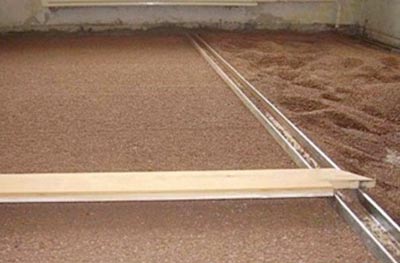
Before falling asleep waterproofing material, it is necessary to prepare the cavity or make the formwork. The active component is also poured into it. Then it is evenly distributed over the surface and compacted. It is desirable to plaster the top of the waterproofing layer.
Waterproofing waterproofing
The okleeknaya waterproofing is a kind of "carpet" of rolled polymer-bitumen products. The work is carried out by layer-by-layer gluing of insulating materials from the hydrostatic pressure side. To stick insulating material, mastic is first applied to the surface.
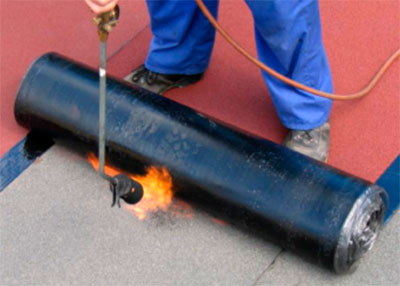
Then a roll is rolled onto it and pressed by a hand roller. If air bubbles form under the material, they are pierced with an awl and, pressing down to the base, release it. The rolls are glued with an overlap of 10 cm. The top of the waterproofing is covered with a cement screed.
Please note that in each layer of gluing waterproofing, the panels are glued in one direction.
Possible defects in waterproofing and their elimination
Defects in the waterproofing layer are observed when using low-quality materials. When carrying out work with a violation of the process or deviation from the project.
Coating and plastering
Defect. The formation of cracks, delaminations, cavities (voids of a round shape).
Elimination. Clean cracks with a wire brush or scraper. Fill with insulating compound. Loose and swollen areas with a rammer. Apply an additional layer of waterproofing to the defective area.
Cast
Defect. Uneven thickness of the insulating layer, swelling, through cracks.
Elimination. Level the surface with additional layers of insulation. Swelling cut to the base. Fill the cleaned area layer by layer with waterproofing material to the coating level. Thoroughly wipe through the cracks with mastic.
Backfill
Defect. Poorly made screed over the backfill material.
Elimination. Replace or repair screed.
Okay
Defect. The presence of cracks and tears. The formation of blisters. Delamination of edges from the surface.
Elimination. Clear cracks and gaps, remove defective places. Seal with new material. Swelling cut with a sharp knife crosswise. Bend the edges of the cut, clean the place under them. After applying the mastic, stick it in place. Peel off the peeled edges, grease with mastic and glue.
Video example of waterproofing
Properly carried out waterproofing the floor protects building structures from the damaging effects of moisture. Thereby increasing the reliability and durability of buildings and structures.
In addition, reducing the moisture content in the air, waterproofing improves the indoor climate. And this has a positive effect on its inhabitants.

